Varieties of doors
There are the following types of wrought iron doors.
Bivalves (double)
Double-leaf forged doors are suitable for openings from 130 cm wide. Despite the fact that such an entrance structure looks impressive, in combination with a mirror cloth and forged ornament, it gives visual lightness to a stone facade.
On the picture the main entrance to a private house, a mirror insert on the doors creates the illusion of endless space.
Single leaf
A single-leaf metal door will adorn the faceless facade of a typical cottage, giving it a chic look of a country villa. Also, a single-leaf structure will be the only option for a standard apartment opening.
One and a half
At the one-and-a-half door, one leaf is wider than the other. This is a compromise option for those cases when it is necessary to increase the throughput of the passage from time to time. In addition to convenience, this design looks original and allows you to "play" with the decor.
On the picture townhouse porch. The entrance portal is faced with natural stone, both doors are decorated with carvings and steel bars in the medieval style.
Street
Doors with steel elements are selected depending on the architecture of the facade, the height of the building and the climatic zone. In places with a mild climate, you can install a lighter version with glass inserts; for cold winters, a deaf insulated door with an overhead forged decor is suitable. The porch and the entrance testify to the status of the owners of the house or cottage, their taste and wealth.
On the picture a porch in a large country house, windows with diamond-shaped bars and forged medallions remind of a knight's castle.
Interroom
Doors with wrought iron decor are installed in large apartments and houses. A wrought-iron door is mounted in the openings leading to the veranda, to the winter garden, to the wine cellar. For small-sized housing, the iron decor will be too heavy, in this case it is better to use it in the form of separate compositions, overlays, rivets.
On the picture a two-story summer cottage, the design contains forged elements, including railings and window bars.
Door material
Forged doors are made entirely of metal or in combination with wood.
- Wooden. It is difficult to find a more organic combination of materials in design than metal and wood. The patterned ornament stands out graphically against the texture of natural wood, emphasizing its natural beauty. Solid wood is a natural insulation and has high sound-absorbing properties.
- Metallic. The door, which consists of a metal leaf and a forged pattern, evokes the feeling of complete protection from external encroachments. But such a product will require additional insulation and sound insulation. Metal doors decorated with forging are often used for gates or gates, among which there are real masterpieces of blacksmithing art.
On the picture massive oak doors with steel openwork and glass insert.
Examples of entrance doors with wrought iron and glass
Glass inserts allow you to admire the forged pattern on both sides of the door. The fragility of glass emphasizes the brutality of the iron forging. Glass can be transparent, frosted or stained. You can choose the option with a window that opens if necessary. In the photo below, frosted glass serves as a background for an intricate pattern.
It is recommended to use glass of increased mechanical strength "stalinite" for the front door.
Mirrored inserts create the effect of an ongoing outdoor space on the other side of the sash.
Photos of forged drawings and patterns
Modern metal processing technologies allow you to create decor of any complexity. The outer side of the steel sheet is decorated with volumetric forging in the form of rose flowers, ivy branches. A flat pattern can be forged in the form of a family monogram; if a garden is laid out around the house, then it is worth taking a closer look at the floral ornament. For modern architecture, designers recommend geometric or abstract designs. The metal is painted in different colors, black, gray, bronze-like are in demand, some elements are painted with gold-like paint.
On the picture gilded fragments of the pattern add sophistication to the work of the master.
Pictured below is an Art Deco wrought iron door. Longitudinal steel rods continue the lines of the stained glass ornament, the original brass handle is made in the form of a half-hoop.
The vine is one of the most popular plant motifs in wrought iron decor. Craftsmen manage to reproduce its bizarre curves in metal, and bunches of grapes are a classic example of volumetric forging. The photo below shows a fragment of an entrance metal structure with a complex pattern.
Design and decoration of doors
The design of a wrought-iron door should be combined with the exterior of the building and the overall style of the interior.
Arched doors
The arched vault allows you to increase the entrance opening in height. This shape of the opening refers to the Gothic style in architecture and will look organically against the background of a stone or brick facade.
With a visor
The visor over the entrance portal reliably protects the porch from precipitation and icicles, in addition, it also carries an aesthetic load. The visor serves as a frame for the front door and must match it stylistically.
On the picture the porch is decorated with an openwork canopy, which is supported by two steel columns in the same style.
Antique
Forged decor is the oldest way to decorate the exterior of a building. In order to give a metal product an aged look, metal patina is used with acid-based paints. Doors with patinated elements and brushed wood are sometimes difficult to distinguish from old ones.
Lattice
This option is used when you want to isolate a place near the front door from public access. This design increases the safety of the home by blocking access to unwanted visitors directly to the entrance. The openwork pattern not only does not spoil the appearance of the porch or entrance, but also becomes its decoration.
With transom
Thanks to the transom above the entrance, more natural light enters the hallway or hallway. Such a door is installed if the ceilings are higher than 3.5 meters, but in some projects the transom serves as a window on the second floor or gallery. In the photo below, the entrance structure with a transom looks majestic against the background of antique stone walls.
Carved
The combination of carving and forged elements looks luxurious, but in order not to overdo it with the decor, the emphasis should be placed on either wood or metal.
On the picture wooden doors with laconic carvings in a classic style visually highlight the ornate pattern on the glass.
Photo gallery
Forged doors are chosen by both aesthetes and those for whom they live according to the principle "my home is my fortress". The cost of such a product is quite high, because structural steel, durable powder paints for metal, high-quality hinges and handles are used for its manufacture. But the most valuable thing is the skillful work of a master of artistic forging.


 10 practical tips for arranging a small kitchen in the country
10 practical tips for arranging a small kitchen in the country
 12 simple ideas for a small garden that will make it visually spacious
12 simple ideas for a small garden that will make it visually spacious
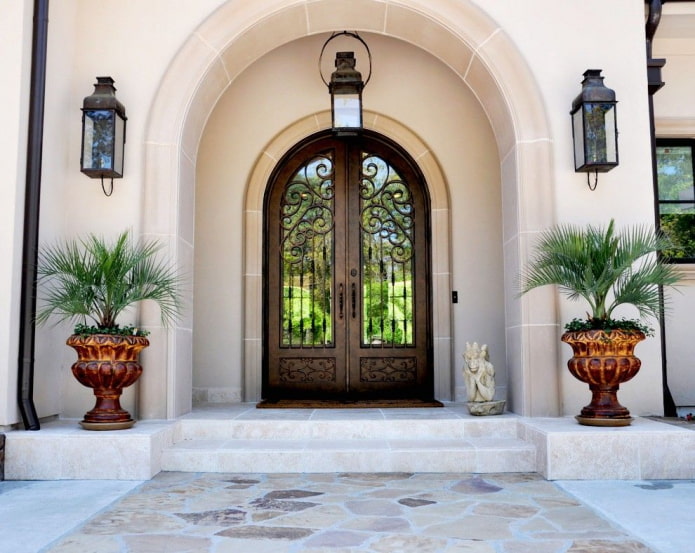
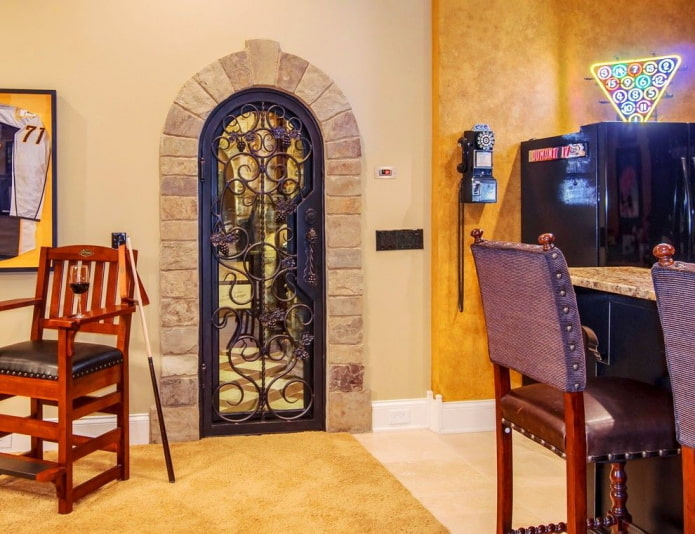
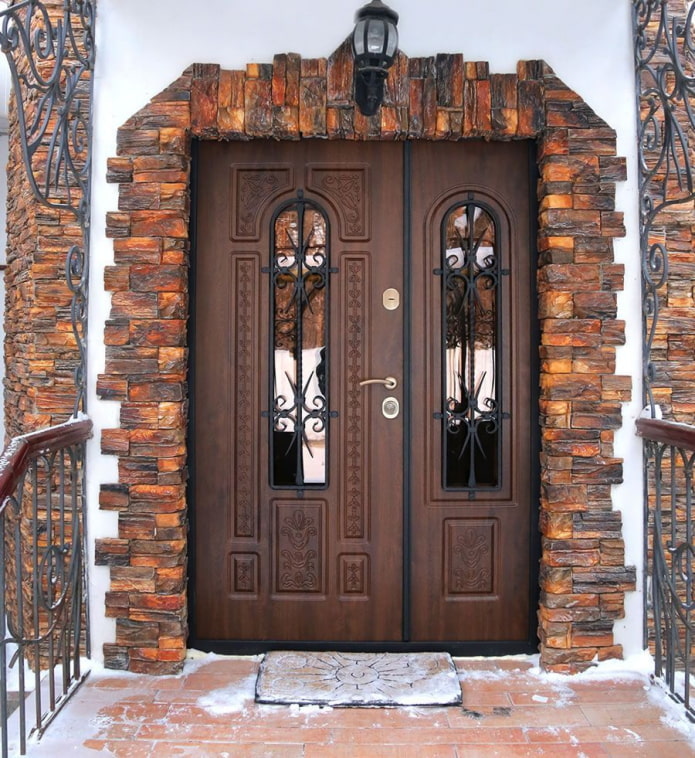
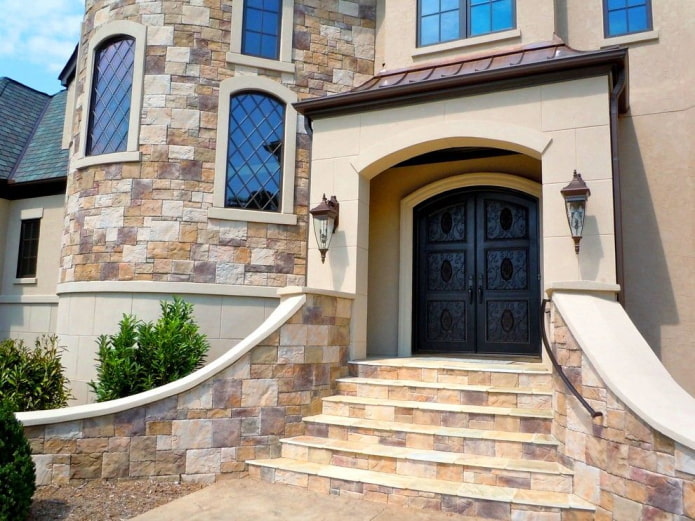
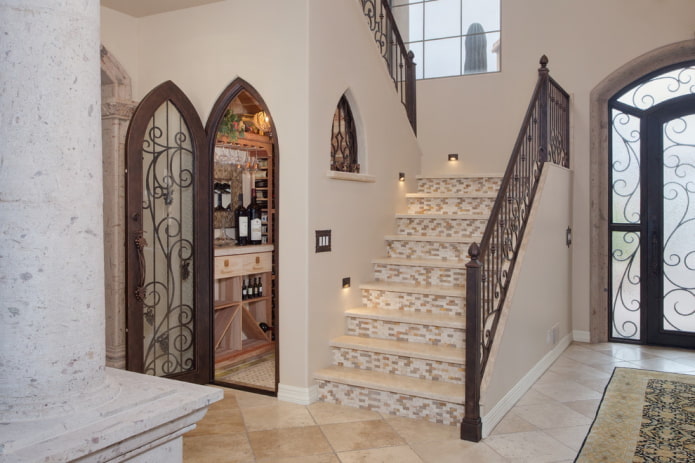
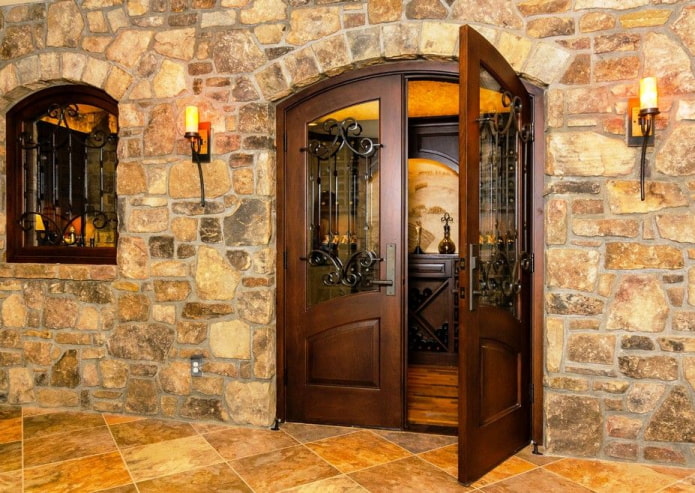
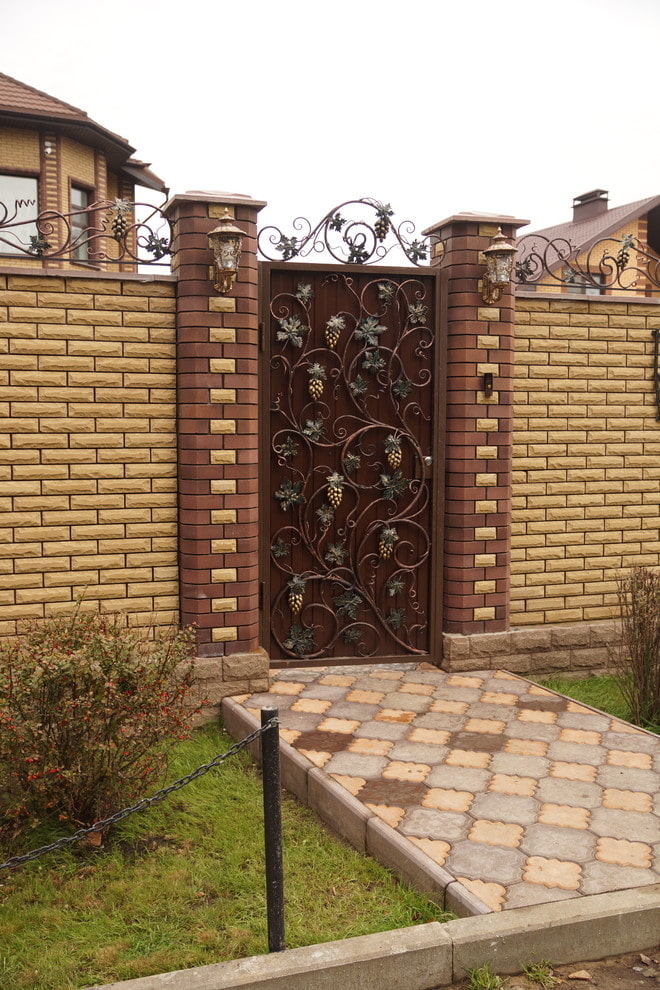

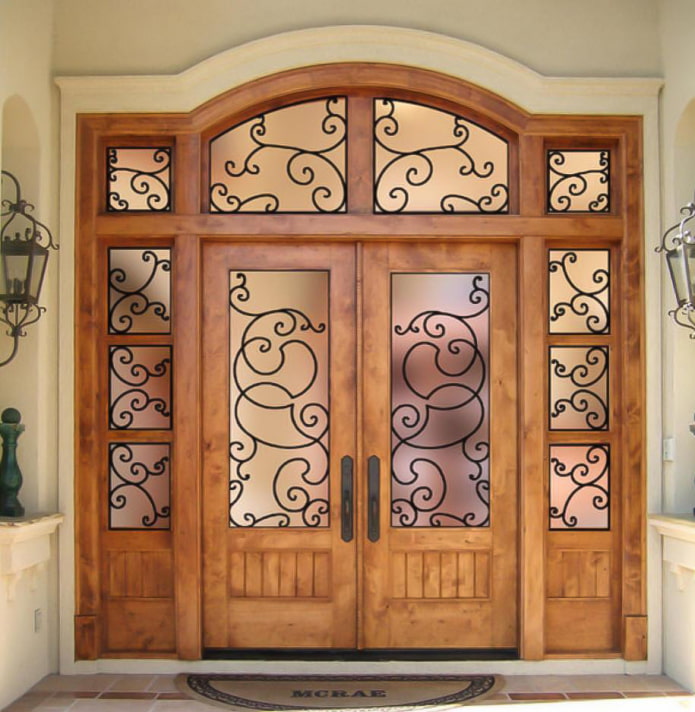

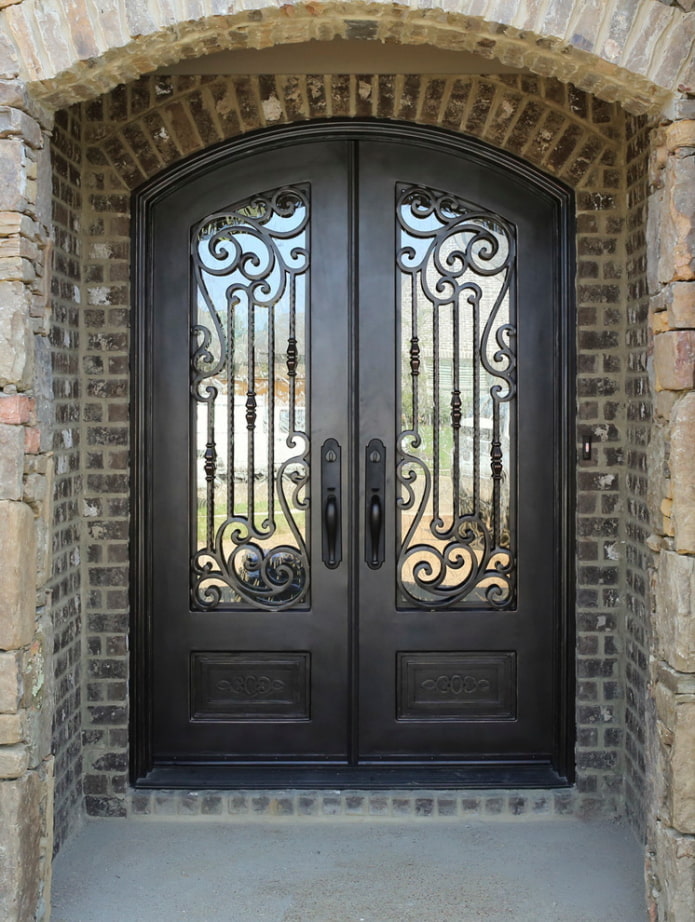
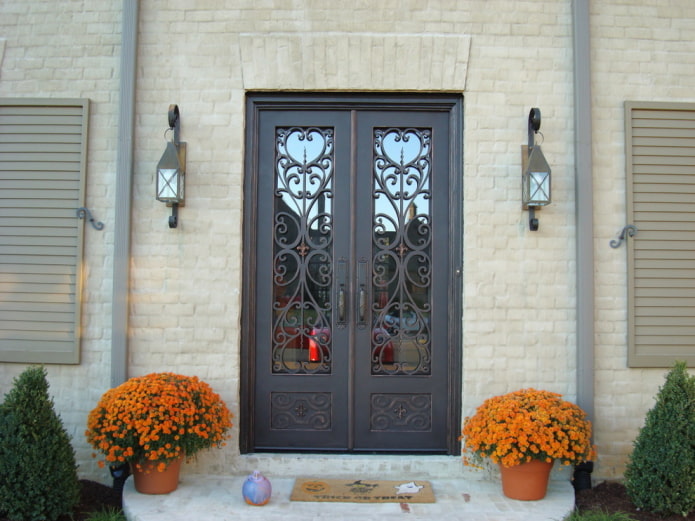

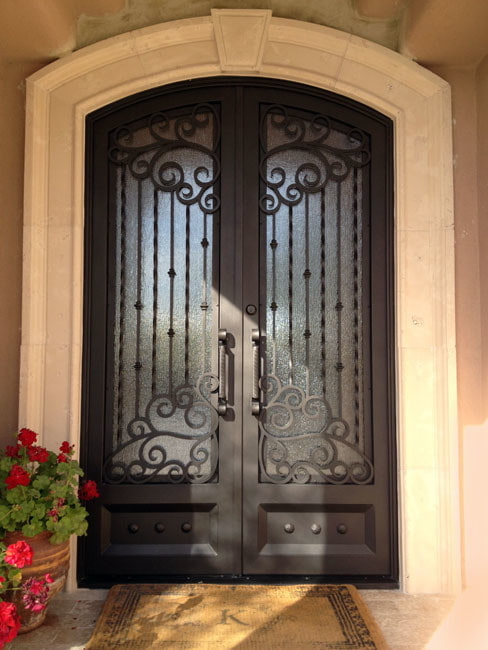

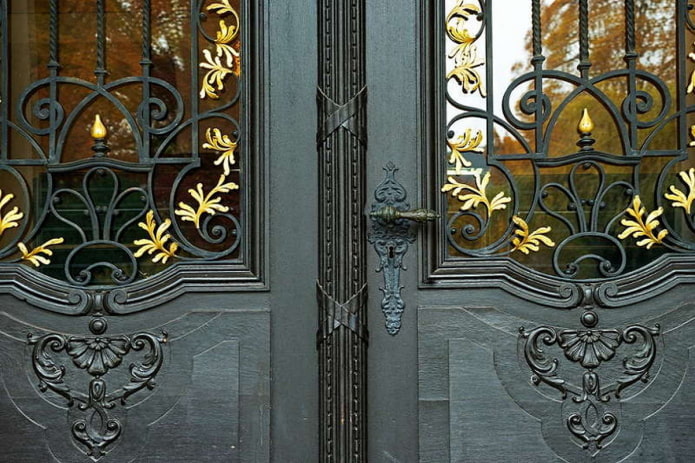
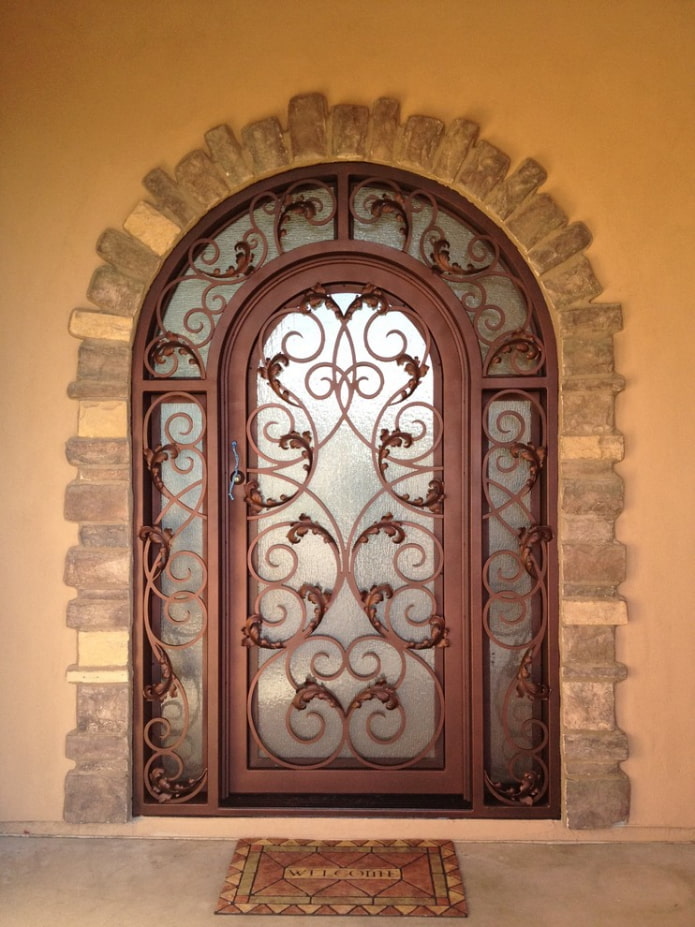
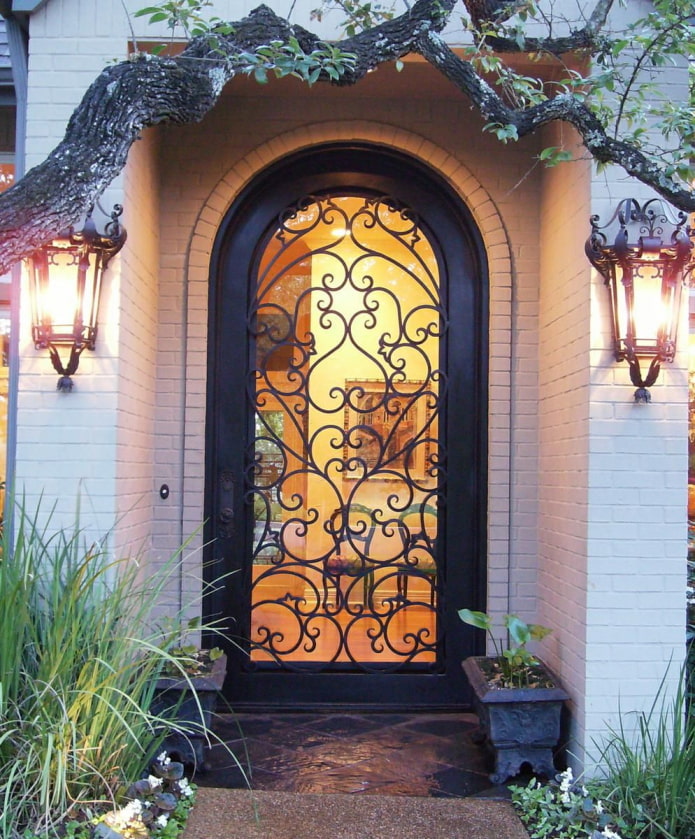
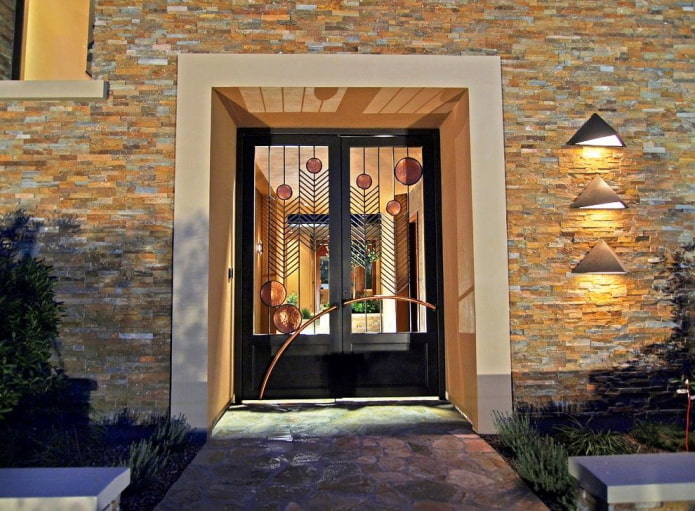
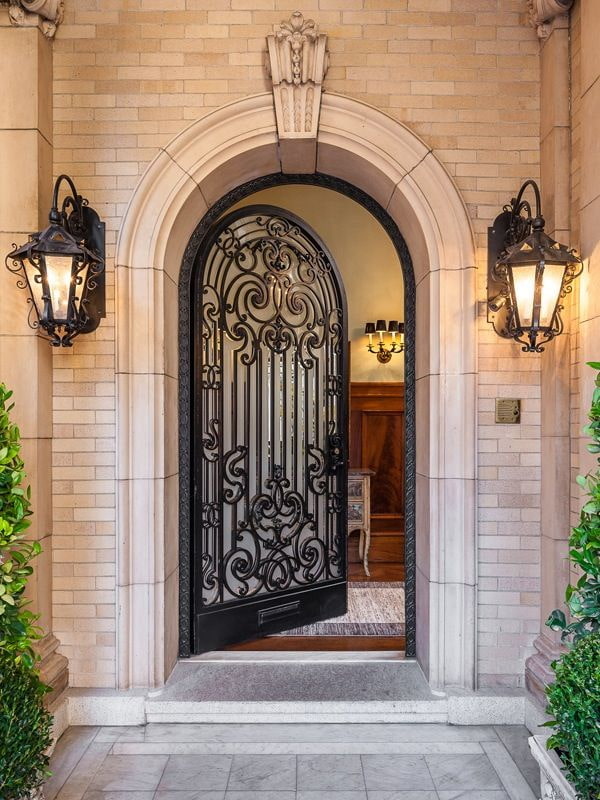



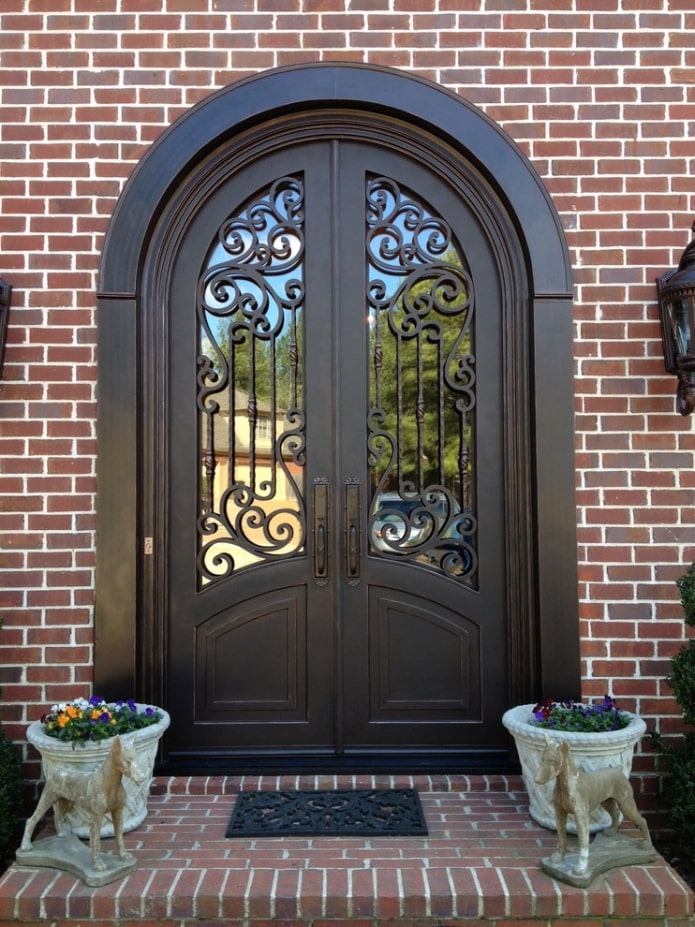


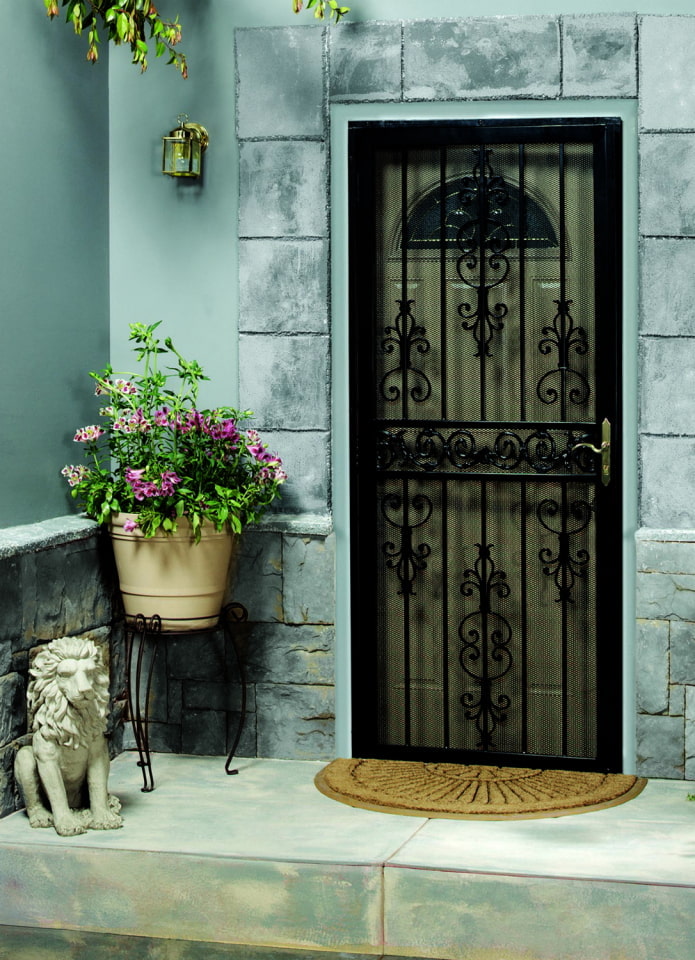
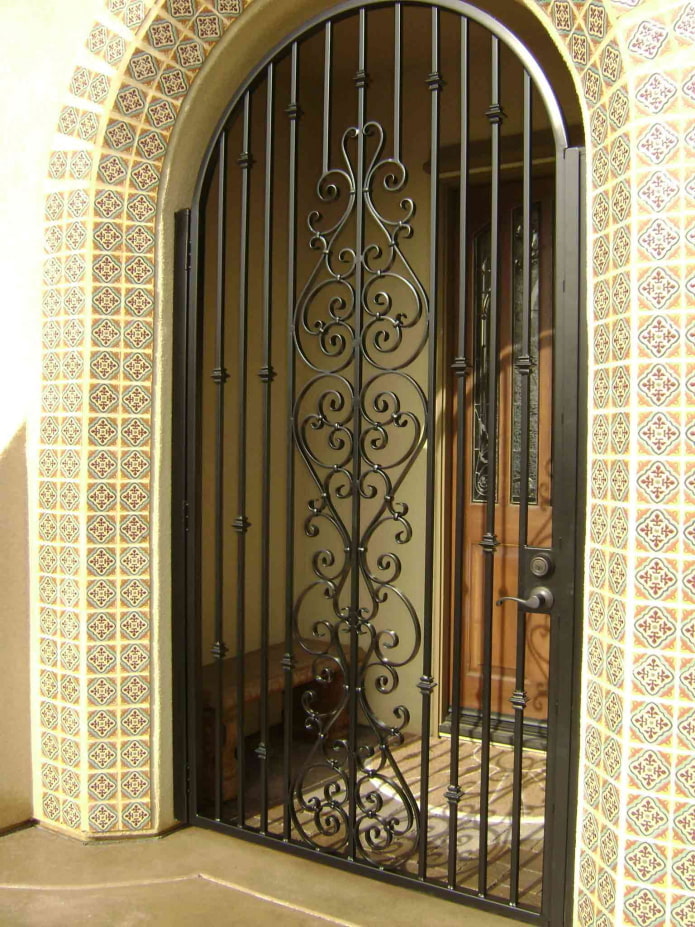

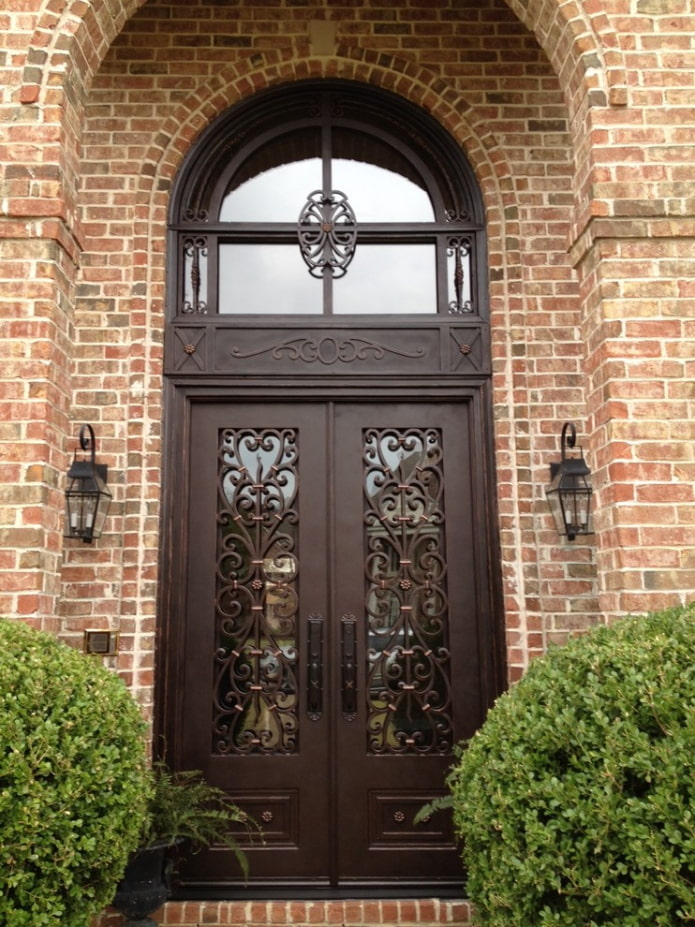
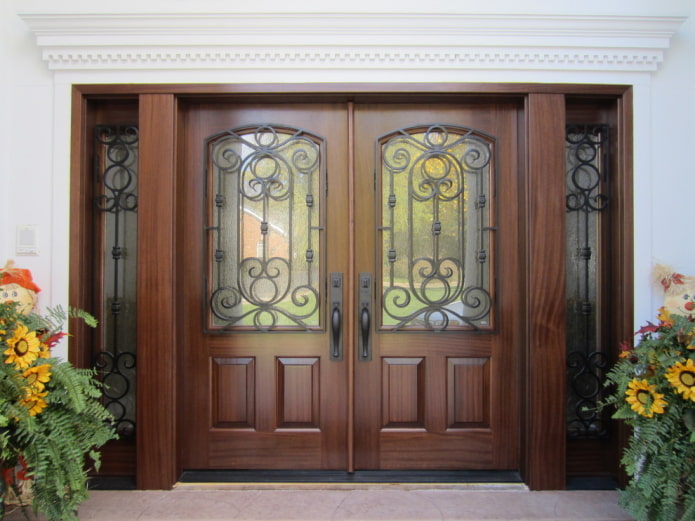
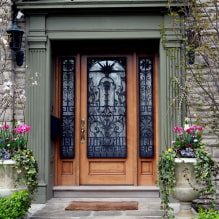
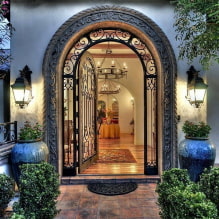
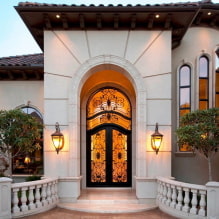

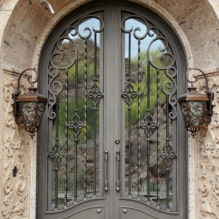
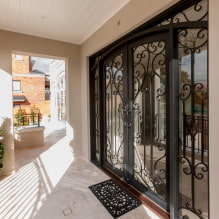
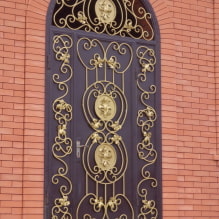

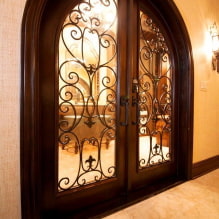
 13 bad habits a good housewife shouldn't have
13 bad habits a good housewife shouldn't have 24/7 home cleanliness - 4 secrets for the perfect housewife
24/7 home cleanliness - 4 secrets for the perfect housewife 6 hotels in Sochi that will give odds to the promoted foreign hotels
6 hotels in Sochi that will give odds to the promoted foreign hotels Top 10 interior design trends 2020
Top 10 interior design trends 2020 Rating of cheap TVs with Smart-TV
Rating of cheap TVs with Smart-TV New Year's LED garlands on AliExpress - we disassemble while it's hot, so that it's bright at home
New Year's LED garlands on AliExpress - we disassemble while it's hot, so that it's bright at home